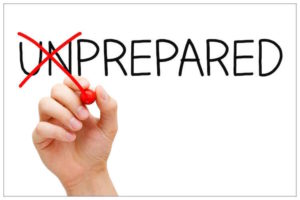You’re driving to the grocery store, a trip you’ve made a thousand times. Out of nowhere comes a car running the red light at the intersection you’re crossing – heading straight toward you! Crash!! You’re hurt, stunned and quite possibly in shock.
The police and ambulance arrive. First they ask questions about the accident, most of which you can answer. Then they ask about medications you take, allergies and an emergency contact’s phone number. Your mind goes blank. You are taken to the hospital but you’re unable to give the ER doctors any information that could help them treat you.
Accidents can happen anywhere, anytime to anyone, especially as we’re getting into the busy travel season. What can you do?
Create an Emergency Card containing your critical information to keep with you at all times. Organize it in an easy-to-read format. My Emergency Card is set up in a multi-column format. I recommend it be typed using a plain font and printed on heavy paper or card stock.
However you organize your Emergency Card, start with Emergency Info For. Under that, put your full name and address.
Suggested column headings are:
- Emergency Contact with full name, address and phone number
- Date of birth
- Meds
- Vitamins
- Allergies
- Major illnesses/operations
- Primary doctor
- Hospital
- Pharmacy
- Blood type (if you don’t know, find out)
For 3-6, make a list. For 7-9, include full name, phone number and address.
Add any information you think is important.
Make the card small enough to keep in your wallet with your health insurance ID card, driver’s license and car registration. If you plan to be an organ donor, be sure it’s noted on your driver’s license or have a signed Organ Donor Card. Don’t keep the information in your phone if your phone is locked because it cannot be accessed. However, if your phone is unlocked, put the info in Contacts labeled ICE (in case of emergency). First-responders should know to go to your wallet or phone for this information.
Having an Emergency Card could be a life-saver.





